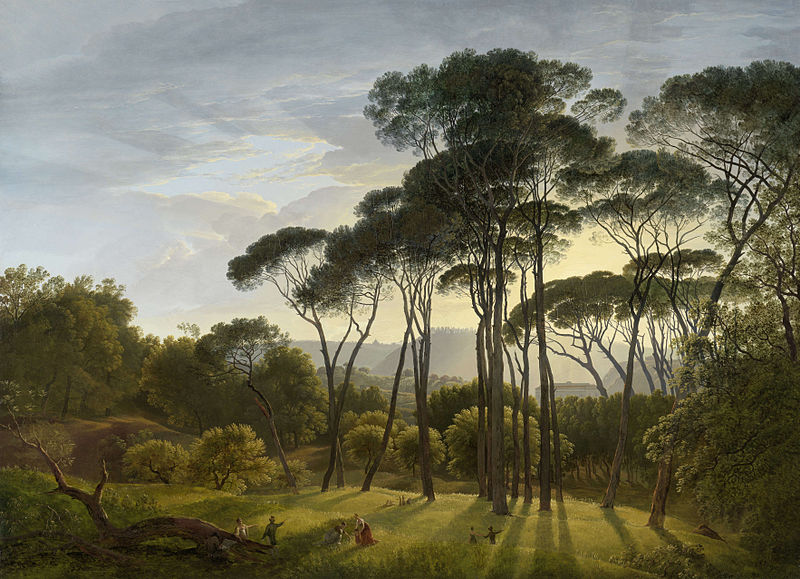The Western idea of landscape is generally considered to have emerged in the Early Modern period, resulting from a new relationship to space, a “new spirit of place identity” (Olwig 1996) that was itself the product of changing socio-economic conditions, in particular the development of individual land ownership (Cosgrove 1984,1985). It may notably be understood as a new way of seeing that served comparable purposes to surveying and mapping in the process of appropriation of space which occurred in that period (Cosgrove 1985).
It may, however, also be understood as an aesthetic response to the early stages of European urbanisation which took place at that time and to the new awareness of rural spaces that distance from them entailed. As Michel Collot points out, one can only talk of landscape from the moment one perceives it (“On ne peut parler du paysage qu’à partir de sa perception”) (Roger 2009, 210). “Landscape” is perceived space that is given aesthetic value, the need for which seems to have arisen from an original separation.
Beyond this initial severance, the history of the idea of landscape appears to be punctuated by episodes of tension between man and the natural world, in which aesthetic constructions of the latter appear to be correlated to a sense of loss. Just as a removal from rurality seems to have prompted the development of the Renaissance aesthetics of landscape, the flourishing of landscape painting in the Romantic period could be conceived as a response to industrialisation.
Today, with the rapid degradation of our natural environments, and the observable disjunction between the economic uses of territories and their aesthetic value, the need to make aesthetic sense of the spaces we live in is as pressing as ever. Yet the paradigm of landscape as it was constructed in Early Modern times may no longer be relevant to contemporary environments that contradict earlier conventions of aesthetisation and representation. While some argue that ours is a “post-landscape” age (Wall 2017), highlighting the obsoleteness of the idea, others experiment with new aesthetic spatialities and suggest new artistic practices of space. Contested, unstable and transitional sites, such as derelict urban spaces, redevelopment projects and borderlands become crucial to these redefinitions.
In this issue of the peer-reviewed journal RANAM (Recherches anglaises et nord-américaines), we would like to explore the idea of landscape and its current relevance in the face of contemporary environmental challenges, inquire whether and how we can still give aesthetic and artistic meaning to our environment, but also examine the various ways in which the boundaries between nature and culture may be renegotiated in the context of the Anthropocene.
We welcome contributions that focus on the English-speaking world, analysing artistic representations or practices of space, as well as discourses on landscapes. Papers may discuss temporal and geographical variations of the idea of landscape, comparisons between contemporary and previous engagements with landscape in the visual arts, contemporary artistic interventions in and reflections upon our changing environments, but also the role aesthetic spatialities can play in the building of national/regional identity and cohesion, or the ways in which they can be used to respond to economic or political claims over the environment. Please send a proposal of up to 450 words and a short bio (up to 150 words) to Sandrine Baudry (sbaudry@unistra.fr), Hélène Ibata (hibata@unistra.fr) and Monica Manolescu (manoles@unistra.fr) by March 31st, 2020. Notification of acceptance will be given shortly afterward. The deadline for the full articles (5000 to 6000 words) is September 15th, 2020.
References :
- Andrews, M., Landscape and Western Art, Oxford, Oxford University Press, 1999.
- Casteel, Sarah Phillips, Second Arrivals: Landscape and Belonging in Contemporary Writing of the Americas, Charlottesville, University of Virginia Press, 2007.
- Cauquelin, A., L’Invention du paysage, Paris, PUF, 2000.
- Cheetham, M., Landscape into Eco Art: Articulations of Nature Since the ’60s, University Park, Penn State University Press, 2018.
- Collot, M., “Points de vue sur la perception des paysages”, in Alain Roger (ed.), La Théorie du Paysage en France, Seyssel, Champ Vallon, 2009.
- Cosgrove, D., Social Formation and Symbolic Landscape, Madison, University of Wisconsin Press, 1984.
- Davis, H., and E. Turpin (eds.), Art in the Anthropocene. Encounters Among Aesthetics, Politics, Environments and Epistemologies, London, Open Humanities Press, 2015.
- Howard P. et al. (eds.), The Routledge Companion to Landscape Studies, 2nd edition, London, Routledge, 2019.
- Kaiser, P. and M. Kwon (eds.), Ends of the Earth. Land Art to 1974, Munich, Prestel, 2012.
- Kusserow, K. and Braddock, A.C. (eds.), Nature’s Nation. American Art and Environment, New Haven, Yale University Press, 2018.
- Krauss, W., “Post-environmental landscapes in the Anthropocene”, in P. Howard et al. (eds.), The Routledge Companion to Landscape Studies, 2nd edition, London, Routledge, 2019.
- Oliver-Smith, K., The World to Come: Art in the Age of the Anthropocene, Gainesville, Harn Museum of Art, 2018.
- Olwig, K., “Recovering the Substantive Nature of Landscape”, Annals of the Association of American Geographers 86 (4) (1996): 630–653.
- Roger, A., Nus et paysages. Essai sur la fonction de l’art, Paris, Aubier, 1978.
- Schama, S., Landscape and Memory, London, Vintage, 1996.
- Scott E. and K. Swenson (eds.), Critical Landscapes. Art, Space, Politics, Berkeley, University of California Press, 2015.
- Westphal, B., La Géocritique. Réel, fiction, espace, Paris, Minuit, 2007.
